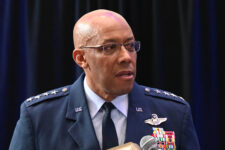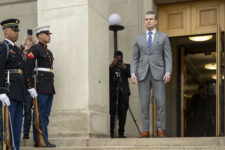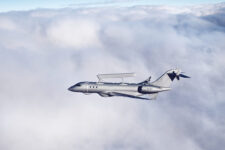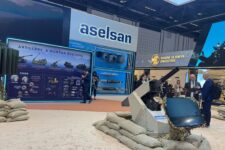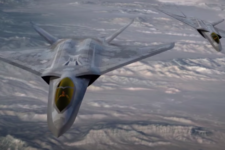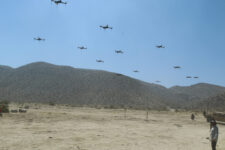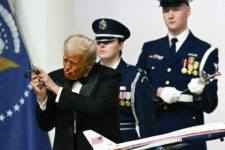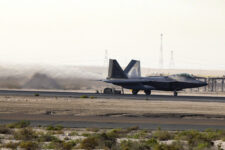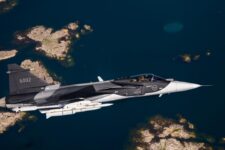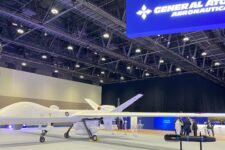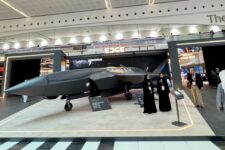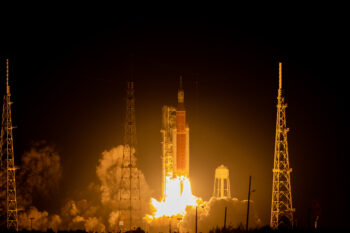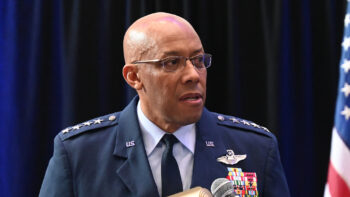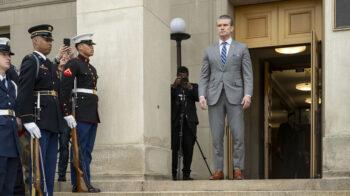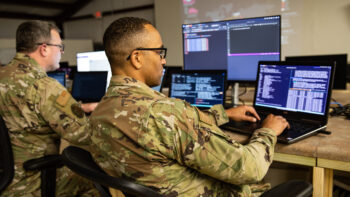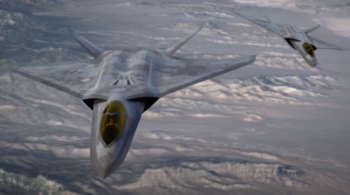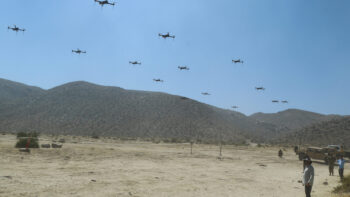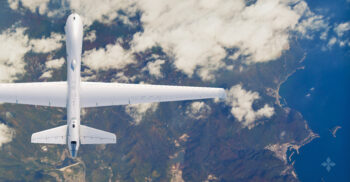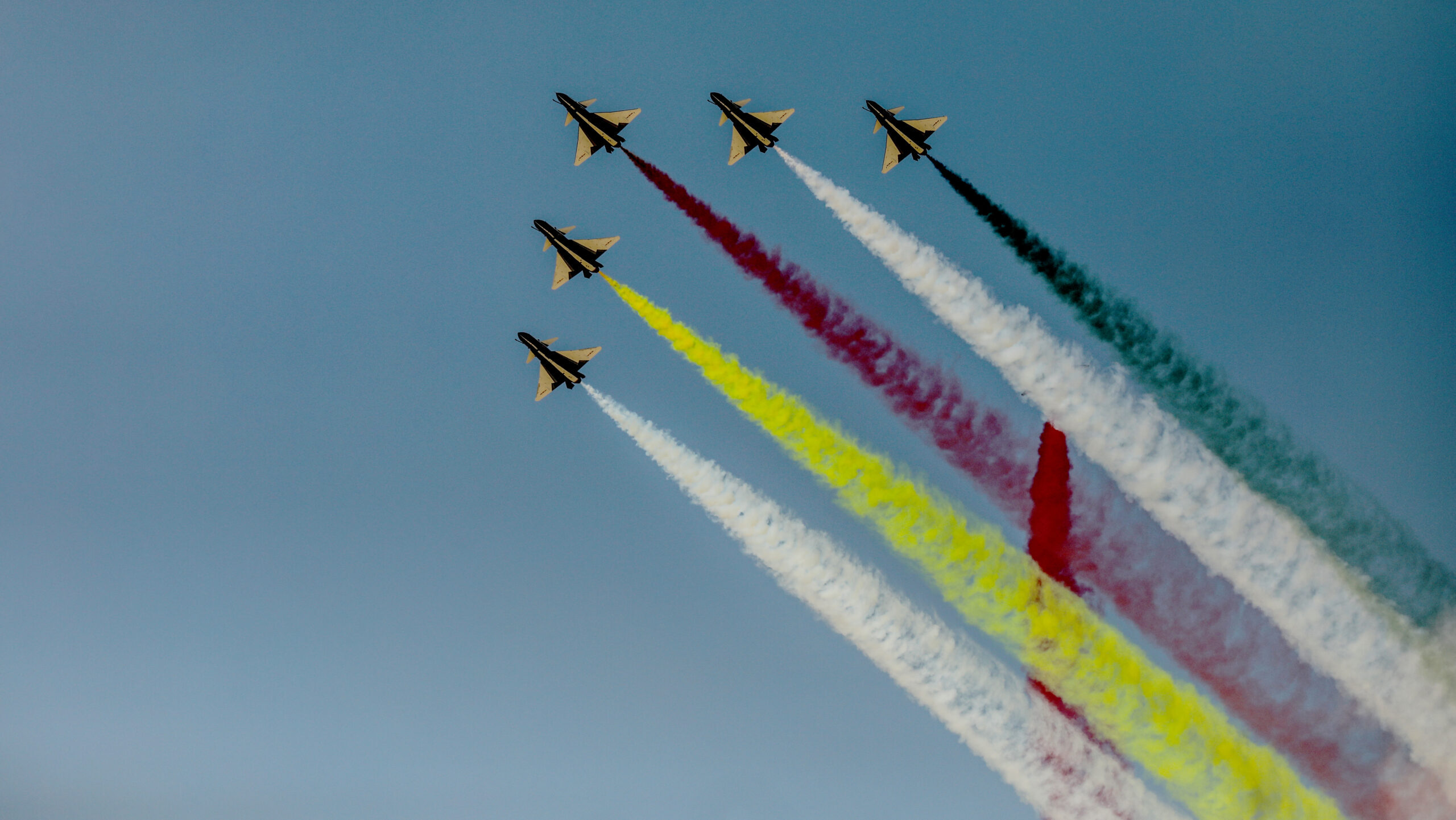
Aircrafts of the Egyptian Air Force perform a demonstration flight on the second day of the Egypt International Airshow at El Alamain International Airport, in Alexandria, Egypt on September 04, 2024. (Photo by Mohamed Elshahed/Anadolu via Getty Images)
BEIRUT — China and Russia are using the first-ever Egypt International Airshow to show off their military hardware for sale, in an attempt to cement their presence in the Middle East and North Africa (MENA).
Both countries are hoping to expand their geopolitical ties into Africa in particular, where the US has suffered a series of steps back in terms of military presence. But for Moscow and China, the show represents a chance to try and pry Egypt away from the US, it’s longtime defense patron.
“Egypt’s position [is] as a major non-NATO ally and the largest Arab military with extensive equipment needs, especially as Cairo prepares to deploy forces in Somalia,” Mohammed Soliman, strategic adviser at McLarty Associates and director at the Middle East institute, told Breaking Defense. “The message China and Russia are sending is clear: they are cementing their strong relationship with Egypt, and the United States isn’t alone in the Middle East. Both countries see Egypt as a gateway to broader influence in Africa and Arab market as well.”
Norman Ricklefs, CEO of geopolitical consultancy firm NAMEA Group, told Breaking Defense that “China is also particularly keen on building a defense relationship with Egypt, a long time US ally in a key strategic position. This is part of China’s long-term geopolitical play, which has also included loans to Egypt.”
Meanwhile, Russia is especially targeting the Sahel and west Africa are areas of geopolitical growth, Ricklefs added.
China and Russia attempting to hone in on Egypt as a potential market is notable given the longstanding weapons transfer relationship between Cairo and Washington.
Egypt is a major recipient of Foreign Military Financing (FMF) from the US. FMF is a pot of money that the American government gives to another nation, which has to be spent to buy US weapons. A State Department fact sheet claims that, “Since 1978, the United States has provided Egypt with over $50 billion in military” aid, and in 2023 the US appropriated $1.21 billion in FMF for Cairo, according to a government database.
However, the future of Egypt’s FMF support is murky. Sen. Robert Menendez, D-N.J., was a major supporter of the effort — but in July was convicted of taking bribes from the Egyptian government, and will lose his grip on the Senate Foreign Relations Committee come January.
What Is On Display At The Show
Both Russia and China brought out the big guns to show off to potential customers. But, Ricklefs said, Beijing probably gets top billing.
“China is the real star of this show, as it’s showcasing its domestically-produced J-10 fighter aircraft (which Egypt is in discussions to purchase), and in particular its Y20 military transport aircraft, which also has aerial tanker and AWACS versions,” Ricklefs told Breaking Defense.
The Y-20 Chinese transport aircraft on Tuesday made a symbolic flight above the pyramids alongside six J-10 Chinese fighter jets. The jets are on display through the duration of the show at El Alamein International Airport. (Ricklefs noted that earlier this month, China demonstrated the Y20 export model to Nigerian defense officials, another sign of regional interest.)
RELATED: In North Africa, a fighter jet arms race, with Russia and the US on either side
He added that the Y-20 is seldom deployed outside China. “The Chinese now have an export version that they would like to sell,” he said.
Soliman noted that as Egypt faces challenges in acquiring the F-15 — let alone the F-35 — Cairo is likely exploring alternative options that meet its strategic needs.
“This is why discussions between Cairo and Beijing may include Chinese stealth fighters like the J-20. The focus isn’t limited to stealth fighters; drones and transport aircraft are also likely on the table. With Egypt tilting toward developing its domestic military industries, it views Moscow and Beijing as potential partners in this effort,” Soliman said.
At the first day of the show, Chinese electronics firm ELINC sealed a deal with the Arab Organization for Industrialization to manufacture defense systems, according to local media reports. While details of the deal were not announced, industrialization and manufacturing deals usually tend to transfer technology from the main company (Chinese, in this case) to the Arab country.
Russia, meanwhile, is displaying a number of defense equipment at the show as well, with the state-owned ROSOBORONEXPORT State Corporation showing off its Ka-52 attack helicopter equipped with the 305E guided missile. Also at the company’s stand is a mockup of the Russian 5th gen-fighter jet Sukhoi Su-57E fighter jet, which the company is pitching with its new Kh-69 missile, according to the company’s statement.
“Our presence here will serve to strengthen military-technical cooperation between Russia and Egypt, as well as to further develop relations with countries in Africa and the Middle East, whose combined share in the company portfolio exceeds 50 percent. I am sure that the Airshow has a great future, and we are ready to become its regular exhibitor” said Alexander Mikheev, director general of ROSOBORONEXPORT, in a statement.
In addition, Russian Orlan-10E and Orlan-30 unmanned aerial vehicles are on display, both of which Russia has been trying to sell to the Middle East.
Mikheev added that as Egypt faces challenges in acquiring the F-15 — let alone the F-35 — and Cairo is likely exploring alternative options that meet its strategic needs.
“This is why discussions between Cairo and Beijing may include Chinese stealth fighters like the J-20. The focus isn’t limited to stealth fighters; drones and transport aircraft are also likely on the table. With Egypt tilting toward developing its domestic military industries, it views Moscow and Beijing as potential partners in this effort,” Soliman said.
Hegseth fires Navy’s top officer, Air Force No. 2
The firings of Adm. Lisa Franchetti and Gen. James Slife follows tonight’s removal of Gen. CQ Brown as chairman of the Joint Chiefs of Staff.

